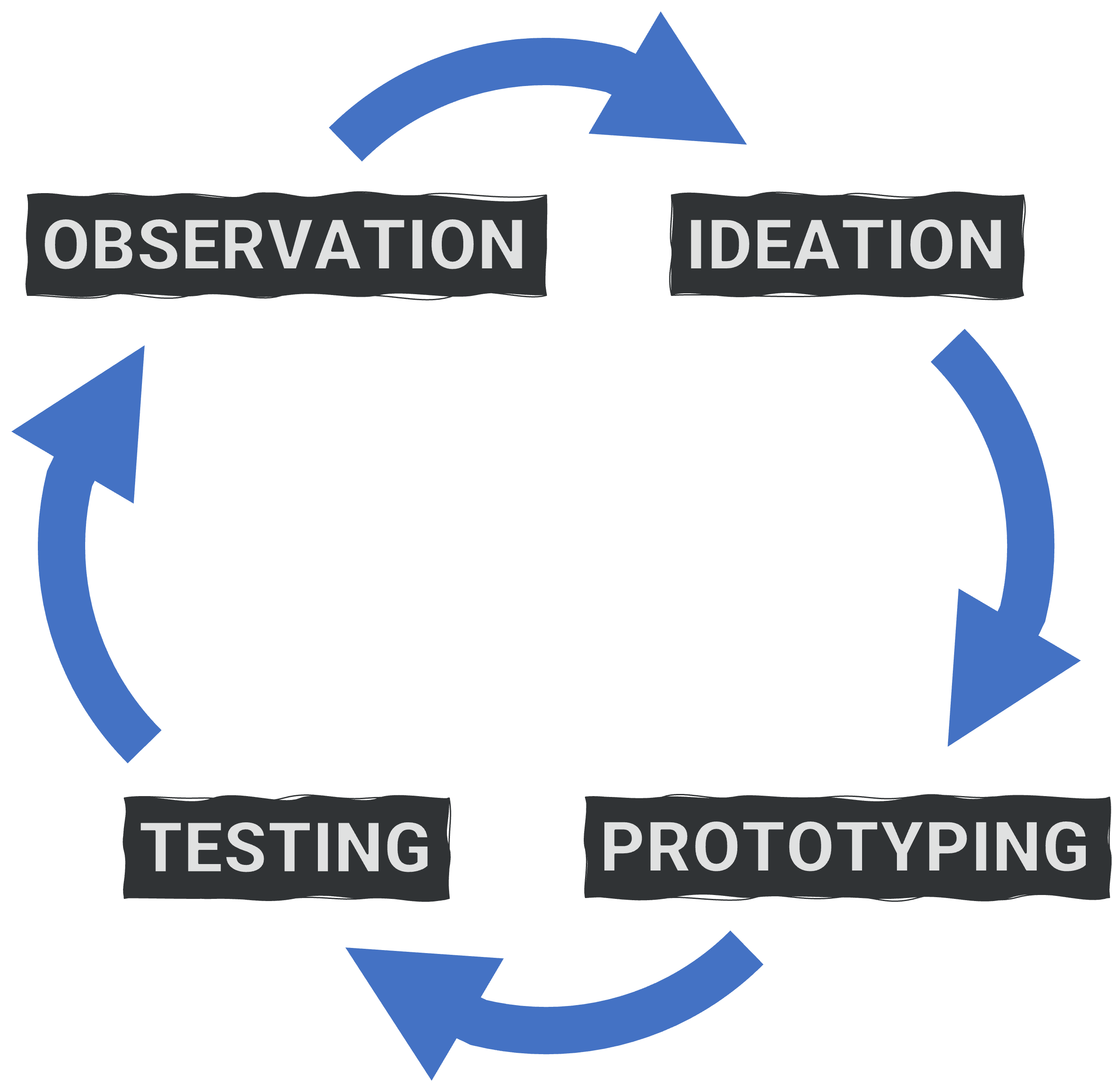DDQ MON 2021-10-04
18. Ideation¶
18.1. Agenda¶
General Announcements
Bookkeeping
Discussion & Activity
Category |
Assignment |
Day |
Date |
|---|---|---|---|
Term Project |
FRI |
2021-10-08 |
18.2. Bookkeeping¶
Important
See Piazza @57 to setup a Figma account if you have not done so already.
18.3. Activity¶
18.3.1. Introduction¶
In human-centered design approaches, the design process is iterative:
- ideation¶
- idea generation¶
In most human-centered design approaches, including design thinking, ideation (or idea generation) is a brainstorming component of the preliminary design phase that is focused on generating potential solutions [TB:2]. Ideation is often semi-structured, team-based, and subject to the following rules [10:04:1]:
Generate numerous ideas.
Be creative without regard to constraints.
Question everything, especially the status quo.
Empathize with users [10:04:2].
Ideation can focus on a single requirement, multiple requirements, or even general problems.
- status quo¶
The existing state of affairs, especially regarding social or political issues. In design, this includes common, existing design solutions that address your requirement or a similar requirement.
- stupid question¶
A questions that asks about things so fundamental that everyone assumes the answer is obvious [TB:2].
I am particularly fond of stupid questions. […] [W]hen the question is taken is seriously, it often turns out to be profound: the obvious often is not obvious at all. What we assume to be obvious is simply the way things have always been done, but now that it is questioned, we don’t actually know the reasons.
—Don Norman, The Design of Everyday Things [TB:2]
18.3.2. Breakout Groups¶
Important
RANDOMIZE: Please move around to different tables and form a random group for this activity.
18.3.2.1. Part 1¶
Quickly introduce yourselves to each other, if you don’t already know each other.
Pick a group representative. This person will be responsible for posting your breakout group’s response on Piazza before breakout group work ends for this activity.
Use the QR code below (click or scan) to access the Mural canvas for this activity, then find the area of the canvas assigned to your specific breakout group.
Consider the app assigned to your group. If nobody in your group has used that app, then notify your instructor.
Note: As a group, come up with an interesting, non-trivial user experience requirement, then note down that requirement on your group’s first sticky note using a user story.
Non-Trivial?
Avoid requirements related to login, logout, etc.
Reframe: On your group’s second sticky note, reframe your requirement as a “how might we” statement.
Template: User Story \(\to\) How Might We
As a
type of user, I wantsome goalso thatsome reason.How might we, as
type of users, accomplishsome goalso thatsome reason.Ideate: Based on your “how might we
...” statement, generate numerous ideas for how you might.... No need to discuss; just generate ideas.Note
Remember to consider the rules included in our working definition for ideation (presented earlier).
18.3.2.2. Part 2¶
Help your group representative respond to the following in a followup discussion to Piazza @63.
List the names of your breakout group members.
App: What app was assigned to your group?
Requirement: What is your user experience requirement?
Problem Statment: What is your problem statement?
Status Quo: What is the status quo? If possible, provide one or more screenshots or images that illustrate the status quo.
Worst Idea:
What do you think is your group’s worst idea and why?
How does your worst idea compare to the status quo?
Best Idea:
What do you think is your group’s best idea and why?
How does your best idea compare to the status quo?
As a group, discuss and comment on the work presented in other followup discussions until the breakout rooms end.

Fig. 18.2 The Mural canvas that students created during this activity.¶
18.3.4. After Class¶
Before 11:55PM today, individually comment on another group’s post by replying to their followup discussion in Piazza @63.
Continue reading the Design module, and make sure you’re aware of current assignments and their due dates.
Extra Practice: Consider reproducing an app you use every day as a mockup in Adobe XD or Figma.
Additional References
- 10:04:1
Elizabeth Gerber. Using Improvisation to Enhance the Effectiveness of Brainstorming, pages 97–104. Association for Computing Machinery, New York, NY, USA, 2009. doi:10.1145/1518701.1518718.
- 10:04:2
Froukje Sleeswijk Visser and Merlijn Kouprie. Stimulating Empathy in Ideation Workshops. In Proceedings of the Tenth Anniversary Conference on Participatory Design 2008, PDC '08, 174–177. USA, 2008. Indiana University. doi:10.5555/1795234.1795265.

Comments
Please keep the comments polite and constructive. In addition to whatever else you want to write, please comment on one aspect of a group’s post that you like and one aspect that you think needs improvement (e.g., you find that something is unclear or you don’t understand a justification). As always, be sure to provide a brief justification for each.